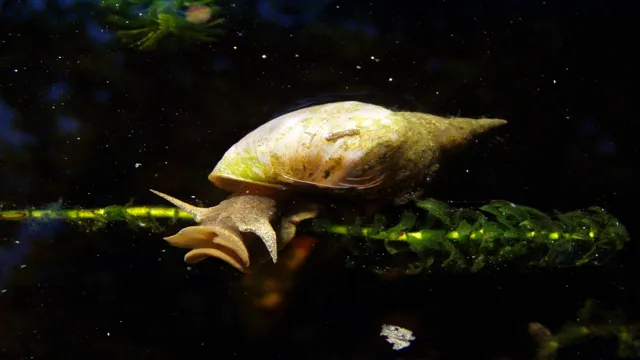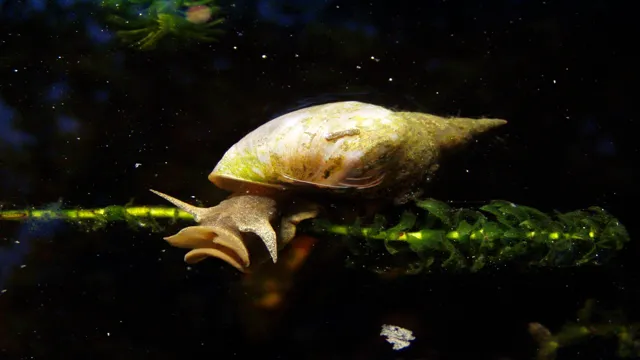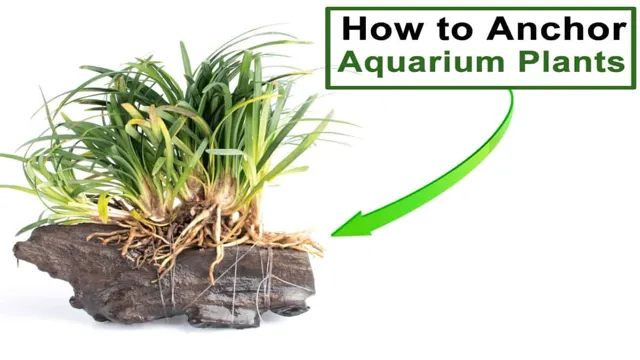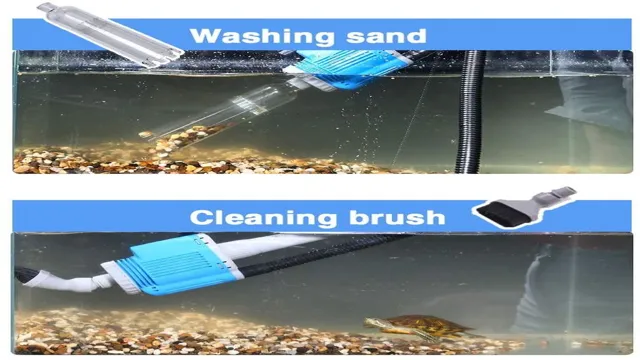Pond snails are incredible additions to an aquarium that not only help in maintaining a balanced ecosystem but are also fun to observe. However, if not controlled, their population can quickly rise and become a nuisance to both the fish and the aquarium. When pond snails’ numbers soar, they feed on plants and algae in the aquarium and can even outcompete fish for food.
This begs the question: what are the best and most effective ways to control pond snail population in your aquarium? In this blog post, we will discuss all you need to know about controlling pond snail population in your aquarium without harming the other aquatic inhabitants. From natural methods like controlling feeding habits and manually removing snails to chemical solutions that should only be used as a last resort, we will cover it all. So, grab a cup of coffee and join us as we explore the best ways to keep your aquarium balanced and healthy while controlling the pond snail population.
Introduction
If you’re an aquarium enthusiast, you may have experienced the sudden appearance of pond snails in your tank. While having a few snails can be beneficial to your aquarium’s ecosystem, an overpopulation of snails can quickly become a nuisance. Luckily, there are a few ways to control pond snail population in your aquarium.
First and foremost, ensure that you’re not overfeeding your fish as excess food can lead to an increase in snail population. You may also consider manually removing the snails from your tank or introducing natural predators to eat them, such as assassin snails or loaches. Additionally, you can use commercial snail control products, but be sure to read the labels carefully and follow the instructions as some products may harm your aquarium’s inhabitants.
By following these steps and monitoring your tank’s snail population, you can keep your aquarium healthy and balanced.
The Problem of Pond Snails in Aquariums
If you’re an aquarium enthusiast, then you’ve probably encountered pond snails at some point. These tiny creatures may seem harmless, but they can quickly become a nuisance in your aquarium. Pond snails are common in freshwater aquariums, and they can reproduce rapidly, causing an infestation that’s difficult to control.
The problem with pond snails is that they eat aquarium plants, breed quickly, and can overpopulate the tank. This can lead to poor water quality, which can be harmful to your fish. In this blog post, we’ll delve into the issue of pond snails in aquariums and discuss some effective ways to control their population.
Whether you’re a novice or a seasoned aquarium keeper, this article will provide valuable insights into managing pond snails in your tank and maintaining a healthy environment for your aquatic pets.

The Importance of Controlling the Population of Pond Snails
Controlling the population of pond snails is crucial to maintaining a healthy aquatic ecosystem. These small creatures can rapidly multiply and overtake a pond, causing imbalances in the natural order of things. Additionally, pond snails can be responsible for introducing diseases and parasites that can negatively impact the health of other animals in the ecosystem.
Without proper control, a pond’s water quality can quickly deteriorate, leading to unpleasant odors and unsightly algae blooms. One effective way to control the population of pond snails is through the introduction of natural predators, like fish or ducks. It’s important to strike a balance, however, as introducing too many predators can also have negative consequences for the ecosystem.
Overall, maintaining a healthy population of pond snails is key to ensuring a vibrant and thriving aquatic environment.
Preventive Measures
If you have an aquarium and notice a sudden increase in pond snail population, there are several preventive measures you can take to control their numbers. One easy method is to limit the amount of food you give your fish, as excessive feeding can result in excess snail growth. Another option is to remove any extra plants or debris in the tank, as these provide snails with a food source.
You can also manually remove snails as you see them, using a net or by placing a piece of lettuce in the tank overnight and removing it in the morning, along with the attached snails. Lastly, adding snail-eating fish, like loaches or assassin snails, can also help to control the population. By taking these measures, you can prevent an exorbitant amount of snails from overwhelming your aquarium ecosystem.
Avoid Overfeeding Your Fish
Overfeeding fish can be detrimental to their health and wellbeing, which is why taking preventive measures is crucial. One of the first things you should do is establish a feeding schedule and stick to it. This will help you avoid the temptation of overfeeding your fish too frequently. (See Also: How to Do Water Changes in Freshwater Aquarium: A Step-by-Step Guide)
Additionally, consider the size of your fish and their dietary needs, as smaller fish require less food and different types of food than larger fish. You can also use feeding organizers or automatic feeders to help regulate the amount of food being given at any given time. By being mindful of your fish’s feeding habits and taking steps to prevent overfeeding, you can help ensure that they stay healthy and happy for years to come.
Remember, a little goes a long way when it comes to feeding your fish!
Clean Your Aquarium Regularly
As an aquarium owner, keeping your aquatic pets healthy and happy is your responsibility. One key aspect of maintaining the health of your fish is regular cleaning of the aquarium. Taking preventive measures to keep the aquarium clean can help reduce the chances of your fish getting sick or your setup becoming overrun with algae or other unwanted organisms.
To start, make sure your tank is not placed in an area that receives direct sunlight, as this can lead to an algae outbreak. Additionally, be mindful of overfeeding your fish, as uneaten food can dirty the water quickly. Using a fish net to skim the surface for any uneaten food or debris is a great way to keep the tank clean.
Regular water changes are also essential for maintaining a healthy aquarium. Changing 10-15% of the water every week, or 25-30% every other week, is a good rule of thumb. Make sure to use a gravel vacuum to remove any debris or waste from the substrate during each water change.
This will help keep the water clear and free from harmful toxins. Finally, keep an eye on the filter and replace or clean it as needed. A dirty filter can lead to decreased water flow and an increase in harmful bacteria, leading to a less than ideal living environment for your aquatic pets.
By taking these preventive measures, your fish will be able to thrive in a clean and healthy aquarium. Regular care and attention can make all the difference in keeping your fish healthy and happy!
Introduce Predatory Snails and Fish into Your Aquarium
When it comes to adding new species to your aquarium, there are always risks involved. Predatory snails and fish can be effective in controlling pest populations, but they can also cause harm to other species in your tank. To prevent any negative consequences, there are some preventive measures you can take.
First, research the specific species of snail or fish you are interested in adding to your tank. Make sure they are compatible with the other species already residing in your aquarium. It’s also important to provide adequate hiding places and spaces for fish to retreat to if they feel threatened.
Additionally, monitor the behavior of the new species closely, keeping an eye out for any aggressive or predatory tendencies. By taking these preventive measures, you can successfully introduce predatory snails and fish into your aquarium without putting the other inhabitants at risk.
Chemical Treatments
Pond snails can quickly become a nuisance in any aquarium, taking up space and potentially harming the ecosystem. Fortunately, there are several chemical treatments available to help control their population. Copper compounds, such as copper sulfate and copper citrate, are effective at killing pond snails but can also harm other inhabitants in the tank, so caution should be exercised.
Another option is the use of an Algaecide that contains formalin or malachite green, which can be effective against snails and algae. However, these chemicals can also harm the aquarium’s plants and fish, so they should be used with care. Before using any chemical treatment, it is crucial to research and follow the instructions carefully to ensure the safety of all tank inhabitants.
Monitoring the population regularly and taking preventive measures, such as avoiding overfeeding and maintaining good water quality, can also help control pond snail populations in the aquarium. (See Also: How to Make Your Own Aquarium Plant Fertilizer: Simple Guide and Tips for Success)
Using Copper Sulphate
Chemical Treatments Copper sulphate is a chemical that has been used for centuries for various purposes, including as a pesticide, fungicide, and algaecide. It is a versatile chemical that is used in many different industries, from agriculture to plumbing. When used as a treatment in agriculture, copper sulphate can be used to control various fungal infections in plants.
It can also be used to control algae growth in ponds and lakes, which can be beneficial for aquatic life. However, despite its many uses, copper sulphate can be toxic if not used correctly. It is important to follow the directions for use carefully, and to use personal protective equipment when handling the chemical.
Additionally, it is important to ensure that the copper sulphate is diluted properly before use, as using too much can harm plants and aquatic life. Overall, copper sulphate is a useful chemical treatment, but caution must be exercised when using it to ensure safety for both the user and the environment.
Using Potassium Permanganate
“potassium permanganate” Potassium permanganate is a chemical treatment commonly used to treat a wide range of medical conditions. It’s a strong oxidizing agent that can help eliminate harmful bacteria and viruses. The chemical is often used to treat skin conditions, such as eczema and dermatitis, by creating a solution to soak the affected area.
It’s also used to purify drinking water and remove iron and hydrogen sulfide from well water. Additionally, potassium permanganate is used in gardening to treat fungal infections on plants. While the chemical is effective, it must be handled carefully and with caution as it can stain clothes and skin.
Overall, potassium permanganate is a versatile chemical treatment with a range of applications in healthcare, water treatment, and gardening.
Natural Treatments
If you’re looking for natural ways to control the snail population in your aquarium, there are a few options to consider. One method is to add live plants to your aquarium. These plants can help control the snail population by competing with them for food, and some species even release chemicals that inhibit snail growth.
Another option is to introduce snail-eating fish, such as loaches or pufferfish, to your aquarium. These species can help keep the snail population in check by actively preying on them. Additionally, you can manually remove snails by hand or with a net.
While these methods may not completely eradicate the snail population, they can help control it in a natural and humane way. Ultimately, prevention is key by avoiding overfeeding and maintaining clean water conditions to discourage snail growth in the first place. Overall, there are plenty of natural ways to control snails in your aquarium without resorting to harsh chemicals or methods.
Using Tea Tree Oil
Tea tree oil has many natural properties that make it an effective treatment for various ailments. This oil is extracted from the leaves of the tea tree and is renowned for its antibacterial, antifungal, and anti-inflammatory properties. It is a versatile oil that can be used to treat acne, dandruff, insect bites, and more.
To use tea tree oil as a natural treatment, you can add a few drops to your shampoo to treat dandruff or add it to your skincare routine to fight acne. It can also be diluted with a carrier oil and applied to insect bites to prevent infection and reduce inflammation. Plus, the oil can be used as a natural household cleaner due to its antibacterial properties.
Overall, tea tree oil is a natural solution that can help improve many common ailments.
Using Saltwater Dip
Saltwater dip is becoming an increasingly popular natural treatment for fish diseases. A saltwater dip is the process of immersing a fish in a saltwater solution for a short period of time to help treat or prevent various diseases. This treatment is believed to be an effective way of killing parasites and bacteria that can damage fish. (See Also: How to Get Hitchhikers off Live Aquarium Plants: Effective Tips and Techniques)
One of the main benefits of using a saltwater dip is that it’s a natural, non-toxic treatment that won’t harm the fish or other aquatic life. However, it should be used with caution and only for a short period of time. The amount of salt used in the dip should be carefully measured to ensure it’s safe for the fish.
As with any natural treatment, it’s important to do thorough research and get advice from an experienced aquarist to ensure you’re using it correctly. With proper use, saltwater dip can be an effective and safe way to treat and prevent various fish diseases.
Conclusion
Controlling pond snail population in your aquarium can seem like an overwhelming task, but with these simple steps, you can achieve a snail-free haven for your fishy friends. From manual removal to natural predators, there are plenty of options to choose from. And if all else fails, remember: there’s always the age-old trick of just naming them all and pretending they’re pets!”
FAQs
What are pond snails?
Pond snails are small, freshwater snails that can be found in aquariums.
Why is controlling the population of pond snails important?
Pond snails can reproduce quickly and overpopulate an aquarium, leading to a decrease in water quality and potential harm to other aquatic life.
How do pond snails reproduce?
Pond snails can reproduce asexually by laying eggs, which hatch into miniature versions of the adult snail.
What are some methods for controlling pond snail populations?
There are several methods, including removing snails manually, adding snail-eating fish to the tank, reducing the amount of food available in the tank, or using chemicals designed to eliminate snails.
Can adding more plants to the aquarium help control pond snail populations?
Yes, some species of plants can help control pond snail populations by serving as a food source for snail-eating fish.
Is it possible to prevent pond snails from entering an aquarium in the first place?
Yes, it is possible to reduce the risk of introducing pond snails to an aquarium by quarantining new plants or fish before introducing them to the tank.
Are there any risks associated with using chemicals to control pond snail populations?
Yes, using chemicals can harm other aquatic life in the tank and may require multiple treatments to fully eliminate the snail population. It is important to carefully follow the instructions on any chemicals used and to take steps to protect other aquatic life in the tank.







